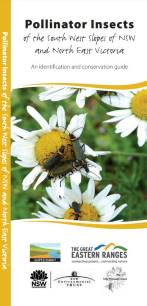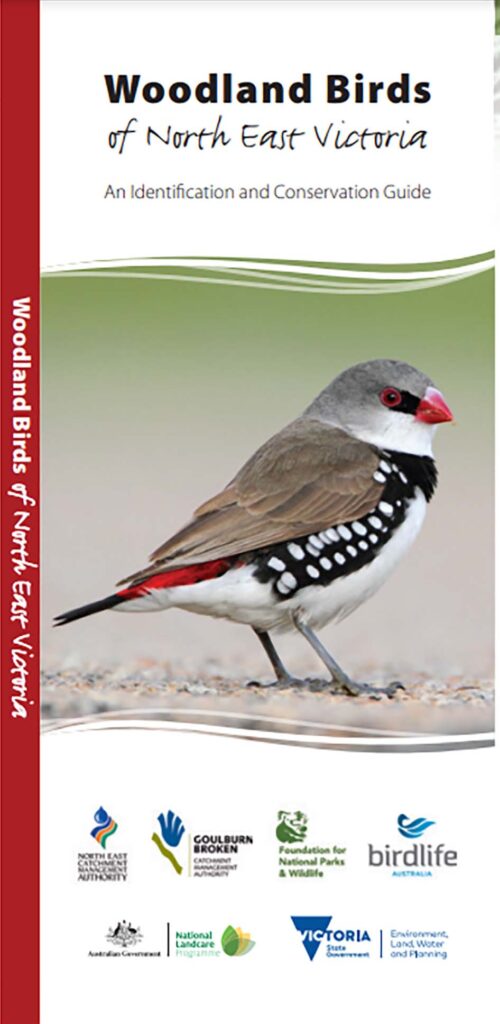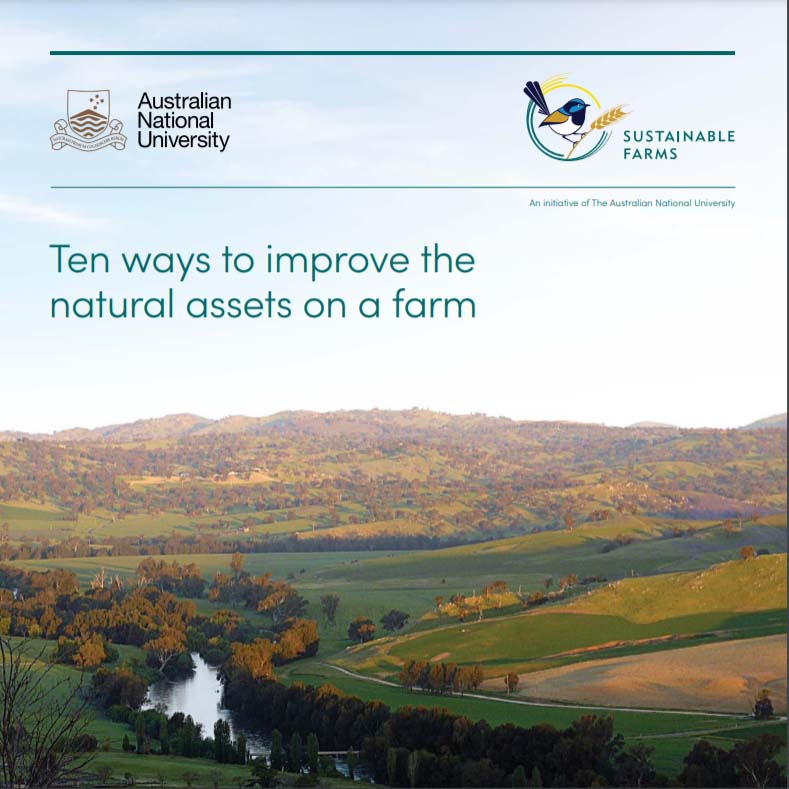Resources
 |
 |
 |
 |
| This booklet is an identification guide and general reference to some of the indigenous plant species commonly found on the Goulburn Broken Riverine Plains.
Published by GMLN |
Seasonal Herbaceous Wetlands (SHW) are isolated freshwater wetlands that are seasonally or intermittently filled by rainfall. They are usually inundated in the cooler months.
Published by GBCMA and North East Catchment Management |
The purpose of Weeds of the Goulburn Broken is to provide all land managers, public and private with a locally relevant field guide that will assist in the identification and management of environmental and agricultural weeds in the Goulburn Broken Catchment.
Published by GBCMA |
Many of the plants presented here can be commonly encountered in remnants or roadsides. Published by Euroa Arboretum and GBCMA |
 |
 |
 |
 |
|
A guide for small landholders to create productive and environmentally sustainable properties. Published by Euroa Arboretum |
Understanding your Soil Test by Cath Botta. A 60 page guide. Published by GBCMA |
The booklet highlights the importance and benefits of retaining and managing the ground storey. Published by GBCMA |
The 30 species of native mammals who reside in the Goulburn Broken catchment are the feature of a new booklet produced by the Goulburn Broken Catchment Management Authority (GB CMA). FREE – Order from GBCMA |
 |
 |
 |
 |
|
This brochure shows a selection of wildflowers from the foothills and mountains in the Goulburn-Broken and Northeast catchments (see map at back). Published by GBCMA and North East Catchment Management |
This brochure shows a selection of wildflowers from the foothills and mountains in the Goulburn-Broken and Northeast catchments (see map at back). Published by GBCMA and North East Catchment Management |
This guide has been prepared to aid identification of a selection of common pollinator insects. |
Victoria’s woodlands are renowned for their rich and varied bird life. Unfortunately, one in five woodland bird species in Australia are now threatened. Published by GBCMA and North East Catchment Management |
 |
 |
||
|
North East Victoria is home to a diverse array of reptiles and frogs found within a range of habitat types. Published by GBCMA and North East Catchment Management |
Victoria’s freshwater environments encompass approximately 85,000 kilometres of streams, rivers and creeks as well as 16,700 wetlands covering 541,000 hectares Published by GBCMA and North East Catchment Management |
||
 |
 |
 |
 |
| This booklet is designed as an introduction to caring for on-farm natural assets such as native vegetation, paddock trees, rocky outcrops, dams and riparian areas.
Published by Sustainable Farms. |
Native vegetation in and around a farm dam has many benefits for water quality, farm productivity and biodiversity. This brochure provides guidance on the types of plants suitable for revegetating dams, and includes lists of recommended plants.
Published by Sustainable Farms. |
Pollinators are an essential component of agricultural production and of healthy, biodiverse landscapes. Protecting and enhancing pollinator resources on farms will help support a diverse range of pollinators. Published by Sustainable Farms. |
Stately old trees standing alone in paddocks are a familiar feature of our rural landscapes. Aesthetically pleasing, they are also important assets supporting agricultural productivity, and are critical for wildlife. Published by Sustainable Farms. |
